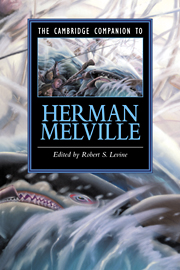Book contents
- Frontmatter
- Introduction
- 1 “Race” in Typee and White-Jacket
- 2 The Tambourine in Glory
- 3 Moby-Dick as Revolution
- 4 Pierre's Domestic Ambiguities
- 5 A----!
- 6 Melville the Poet
- 7 Melville's Traveling God
- 8 Melville and Sexuality
- 9 Melville, Labor, and the Discourses of Reception
- 10 Bewildering Intertanglement
- 11 Melville and the Avenging Dream
- Afterword
- Selected Bibliography
- Index
- Series List
6 - Melville the Poet
Published online by Cambridge University Press: 28 May 2006
- Frontmatter
- Introduction
- 1 “Race” in Typee and White-Jacket
- 2 The Tambourine in Glory
- 3 Moby-Dick as Revolution
- 4 Pierre's Domestic Ambiguities
- 5 A----!
- 6 Melville the Poet
- 7 Melville's Traveling God
- 8 Melville and Sexuality
- 9 Melville, Labor, and the Discourses of Reception
- 10 Bewildering Intertanglement
- 11 Melville and the Avenging Dream
- Afterword
- Selected Bibliography
- Index
- Series List
Summary
Melville is justly said to be nineteenth-century America's leading poet after Whitman and Dickinson, yet his poetry remains largely unread, even by many Melvillians. Most major studies of premodern American poetry have given him short shrift; the recent Columbia History of American Poetry limits itself to a few passing references. The old impression persists that Melville was “a poet of shreds and patches” who never mastered the art. Such is the curse of being only second best. Among American premoderns, next to Whitman, Melville wrote the best series of Civil War lyrics, Battle- Pieces (1866), and the second-best long poem, Clarel (1876), which indeed is the great Victorian epic of faith and doubt. Only Emily Dickinson surpassed Melville in her development of a gnomic, intellectualized rhetoric that gained intensity by working within the confines of rhymed verse while bending those forms to the limit. Most tellingly, Melville's poetry was second best to his own best prose fiction, which also came first chronologically. Hence it is all too easy to type Melville as “essentially” a prose writer who wrote verse with the left hand.
- Type
- Chapter
- Information
- The Cambridge Companion to Herman Melville , pp. 135 - 156Publisher: Cambridge University PressPrint publication year: 1998
- 3
- Cited by



